
| Vol 69 | Page 3 |
Privacy Policy | Editorial Policy | Profit Policy | Join the Association | List of Members | Contact us | Index | Links
Back Go to page: 1 2 3 4 5 6 7 8 9 10 11 12 13 14 15 16 17 18 19 20 Forward
Contents
Air Movements Section Williamtown, 1981
Road convoy destroyed in Korea.
Kerry Brocket's rookie photos.
Page 3 girl - Julanne Williams.
WRAAF Course 110 Point Cook, 1961
Julanne Williams (Nee Sweeney)
My career began in the then WRAAF on the 4th October 1965. 3 other girls and I were flown to Adelaide from Townsville to do Rookies at Edinburgh. I was on 153 WRAAF course and it was funny times living with girls who had never washed a thing, never polished a floor and thought spitting on your shoes while eating chocolate and wondered why they were so dull. I thanked my mum for the things she had taught me which made Rookies easier.
My first posting from Rookies was Richmond. We had C130-A’s and Neptunes. A 36 Sqn mandate was you're in good hands when you fly C-130A. I flew to Townsville a lot of times on the Hercules as I used to babysit the Captain’s children.
After 17 months at Richmond, I was posted to Townsville, a family posting. I had 3 trips on the 10SQN Neptunes to Amberley. What a great posting that was. Next after 2 years in Townsville I was posted to East Sale via Sup Com where I had to get new uniforms (the latest) as mine were all burnt as the family home burnt down.
I got my Corporal’s promotion just before I left Sale. I was at Sale from ’69 to ’71 with my swag over my shoulder I set off for Fairbairn, my next posting. While at Sale I had 3 trips to Townsville in the HS748 Navigation Trainers. At Fairbairn I had a wonderful time and had a few flights in BAC1-11’s and 5SQN Choppers. In mid-1971, I was posted to Wagga. In October 1973 I was promoted to Sergeant. I loved Wagga and its surrounds. There were so many places to go and see. Fruit picking, especially cherries at Tumbarumba. Us girls would climb the trees and stuff our faces with cherries and only pay for the Kilo in the bucket. We had free range for WRAAF. The camaraderie at Wagga was wonderful and being staff, there was always games and gags in the mess and playing jokes on people. It was a very close-knit base. Laugh a minute.
In 1977 I was sent to Amberley. Very noisy base but I loved the noise of the aircraft as all my postings bar one were flying bases and I could pick the aircraft just from the noise of the engines, even in the sky. The F1 11 was a favourite with the Phantom coming second. I joined the WRAAF as a Dental Nurse and after Corporal I became a Senior Dental Supervisor and spent nine years a Sergeant. Being a small mustering, I would have got my crown in November 1982.
In December 1980 I was posted to Williamstown. It was here that I met my now husband. Firstly, Ian "Frosty" Williams was a Sergeant ENG fitter, we got engaged and were to marry in December ’81, but lo and behold Ian was posted to 478SQN Butterworth. So, Ian and I had to decide what to do as that was the only overseas posting he would get. He applied to see if I could go but they said no and would cancel Ian’s posting to keep us both in. Right, I’d heard that before from some of my troops, we decided he would stay in the RAAF and I would take discharge.
We got married 24th October ’81, a week before we left Australia in a RAAF 707. I had done 16 years and 5 days. We loved Malaysia and our son Cameron was born at Penang Medical Centre in February 1983. After 2 years we were posted to Sup Com and our daughter Marnie was born in October 1985 in Melbourne. Ian got his crown in Melbourne and back to Amberley where we bought our home. He was a WOFF when he got out. Our children are grown up now and Cameron has a boy and a girl. Marnie has a son and our new granddaughter arrives in May this year.
P.S. While at Sale our WRAAF accommodation was well below par but from this horrible situation something wonderful came from it all of us girls became very close and for the last 30 years all us girls and their husbands have a Sale reunion. With husbands and wives there are about 80 of us. The last one was in Tanunda last year.
Life is like a box of chocolates.
We are all being issued with Veteran Lapel Pin.
This pic was sent to us by Peter Andresen.
(Pete is a bit hazy on the names after all this time, if you can help, please do.)
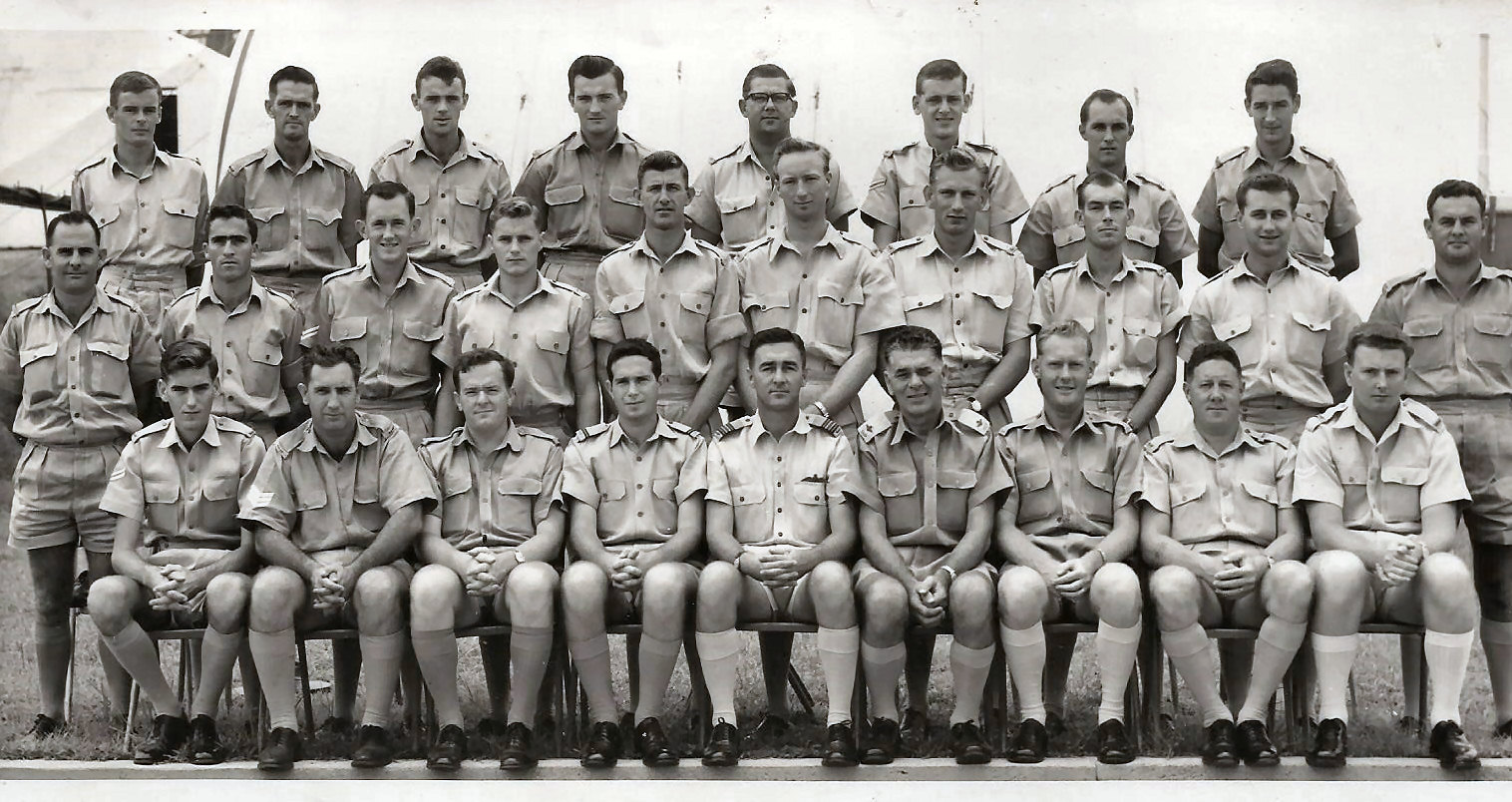
Back Row L-R: Peter Andresen, Don’t know, Ross McCallum, Laurie Culvenor, Don’t know, Derek Hobler, “Doc” White, Don’t know.
Middle Row L-R: Don’t know, Frank O’Brien, Peter Quirk, Don’t know, Don’t know, Don’t know, Don’t know, Don’t know, Don’t know, Don’t know.
Seated L-R: Ron Usher, Don’t know, Don’t know, Dick Orr, Don’t know, Don’t know, Don’t know, Don’t know, Don’t know.
My wife is inside the house singing.
I'm sitting outside so the neighbours don't think I'm beating her.
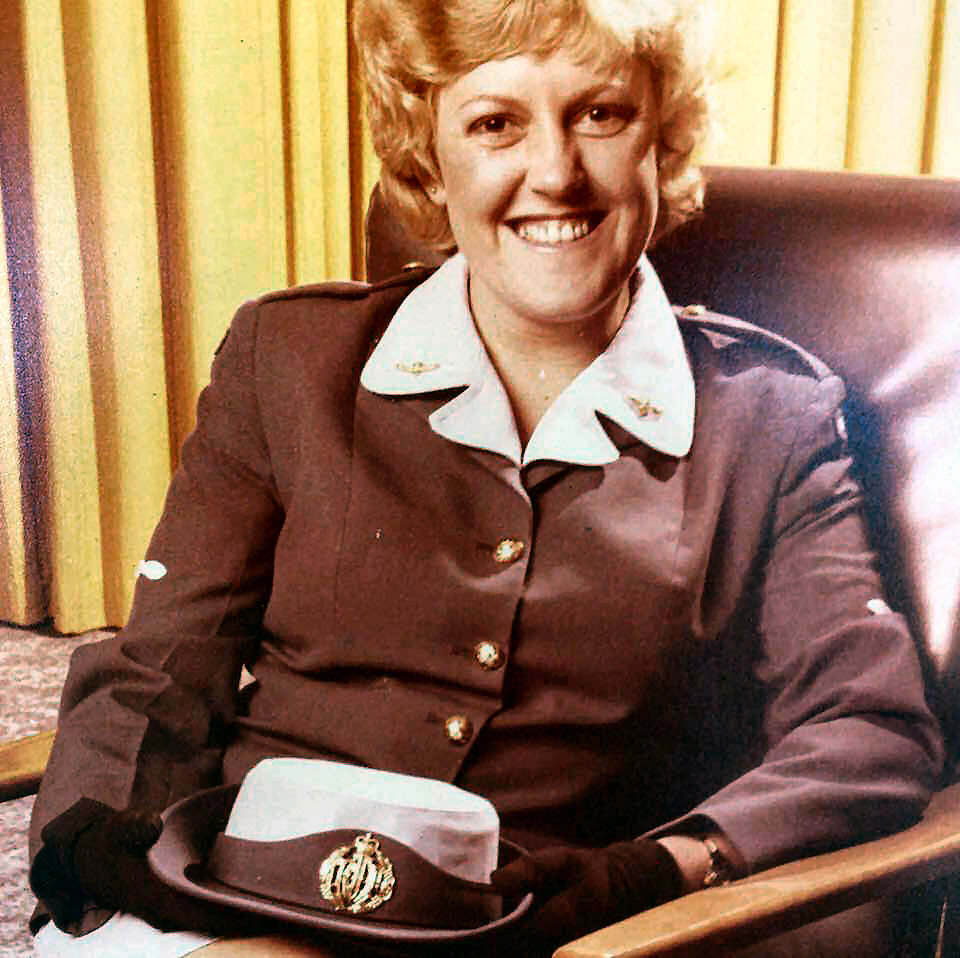
Kerry Brocket’s Rookie photos (1975).
Kerry grew up in Butterworth, went to the RAAF School in Penang and when old enough, joined the WRAAFs. She recalls her time in the Air Force with fond memories and has sent us a few photos of those wonderful days.
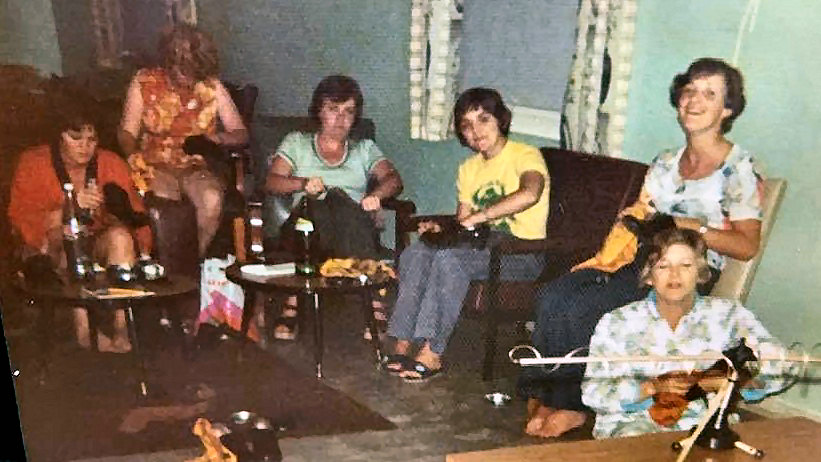
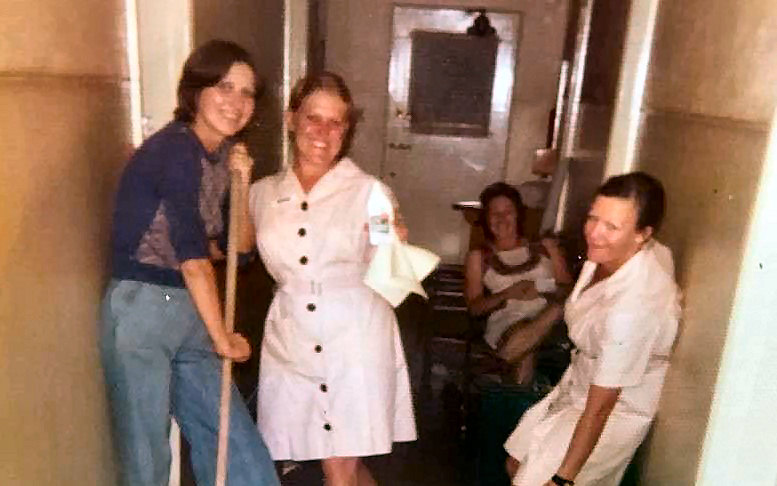
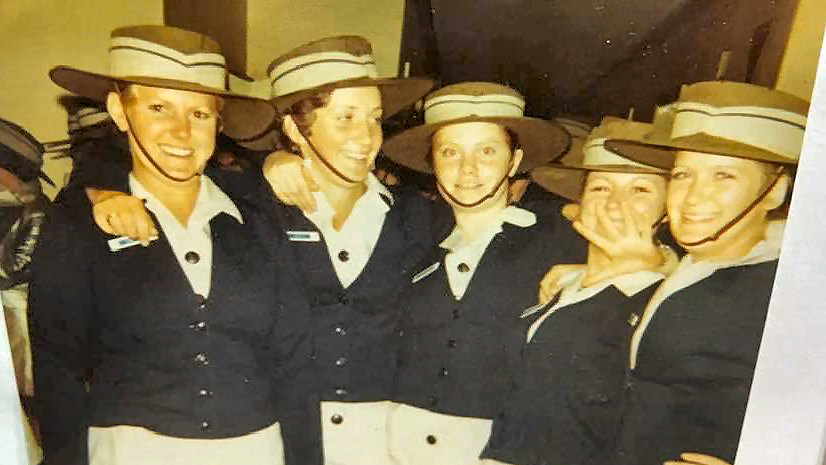
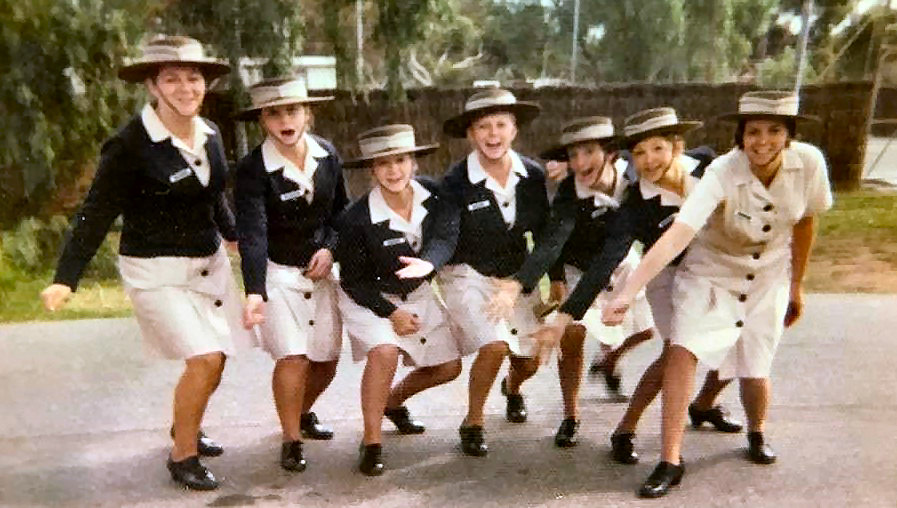
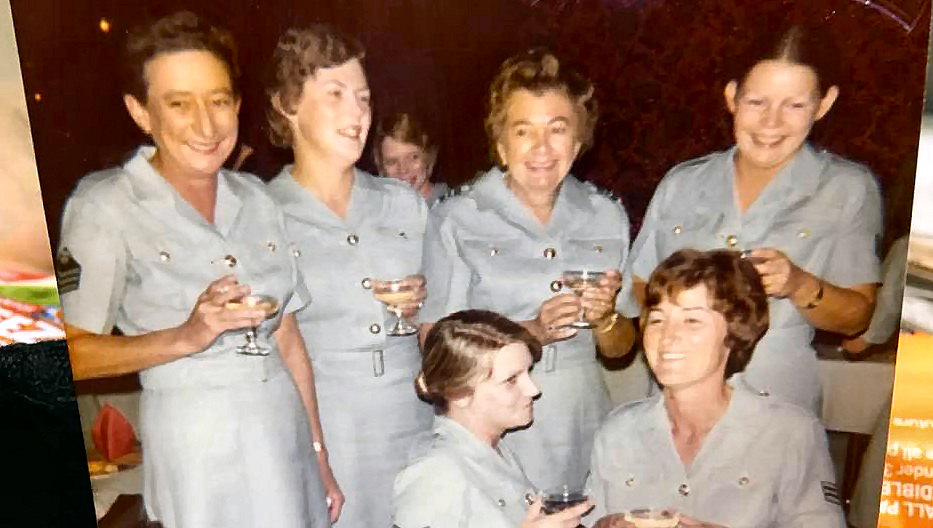
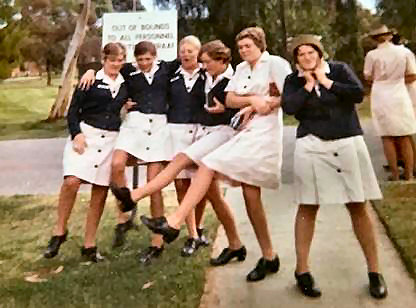
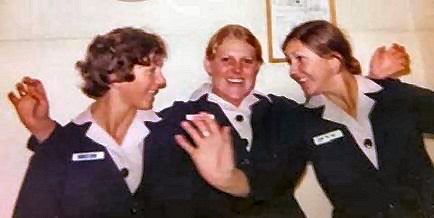
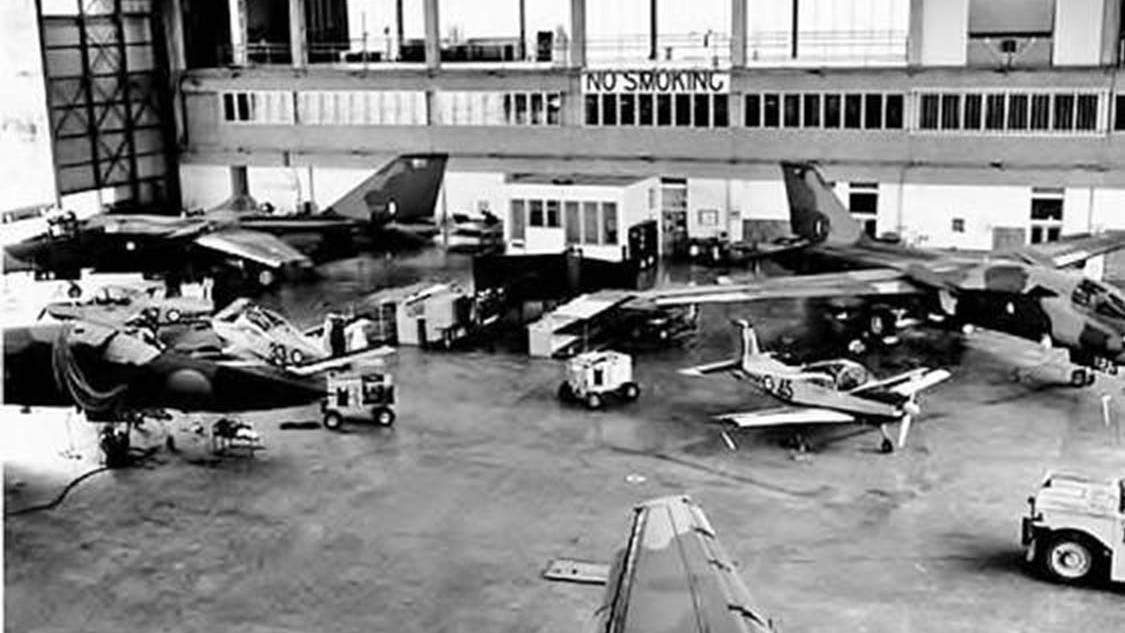
On the 16th March, 1942, No 3 Aircraft Depot was formed at Amberley. The
Depot's function was to erect and despatch aircraft and, by the end of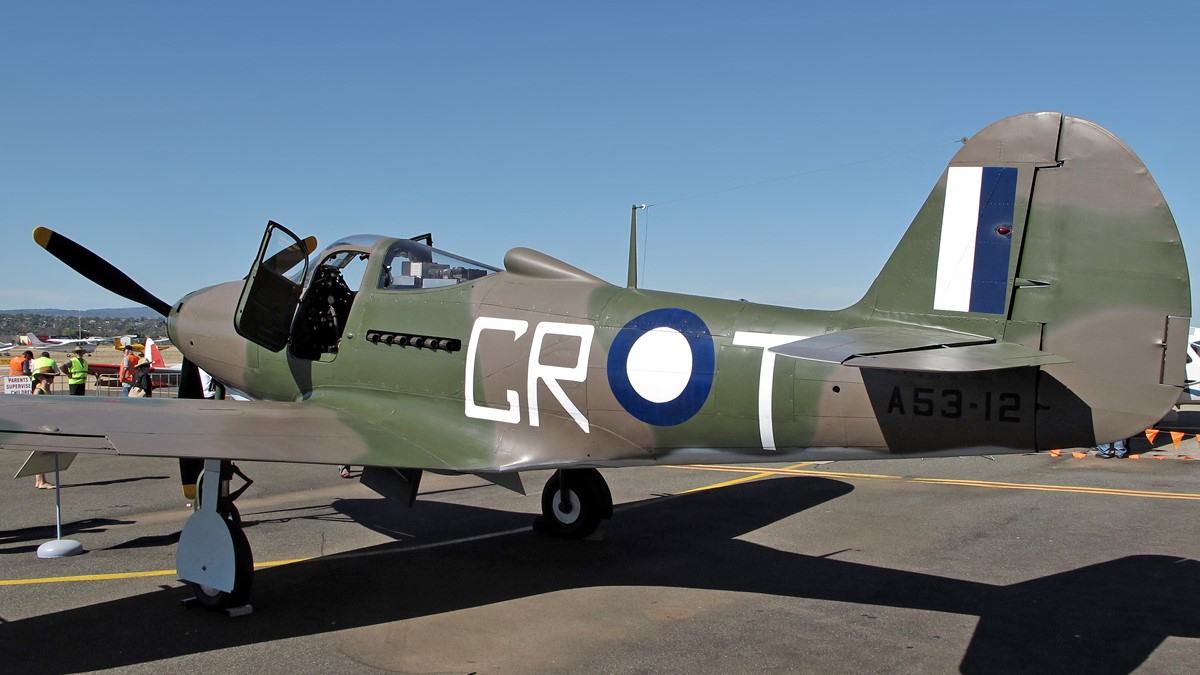 April 1942, No 3 Aircraft Depot had erected 123 P-39 Airacobra Aircraft
(right). 12 B-26 Glen Martin Marauder medium bomber aircraft had been
erected by 1 May 1942.
April 1942, No 3 Aircraft Depot had erected 123 P-39 Airacobra Aircraft
(right). 12 B-26 Glen Martin Marauder medium bomber aircraft had been
erected by 1 May 1942.
In addition, a salvage section was formed to salvage aircraft from surrounding squadrons and aerodromes. The salvaged repairable items were then sent to No 5 Aircraft Depot at Wagga. The Depot also carried out major inspections of Wirraway and Hudson aircraft for operational squadrons and the manufacture of mountings and fittings for forward guns for Wirraways.
Post-War, the Depot maintained Lincoln, Mosquito and Mustang aircraft and by the 1970s F-lllCs together with Iroquois and Chinook helicopters and Canberra bombers.
By the 1980s the Depot was maintaining F-111C and Iroquois aircraft. At this time No 3 Aircraft Depot comprised a maintenance management squadron, consisting of an aircraft equipment maintenance flight (aircraft accessories, electrical and instrument sections), aircraft maintenance flight (armament section and deseal/reseal section) and engine maintenance flight.
On 16 March 1992, No 3 AD merged with No 482 Squadron to form No 501 Wing, which became the largest unit in the RAAF comprising over 1,200 personnel. The Depot completed its disbandment on 30 June that year; No 501 Wing continued to provide deep maintenance and logistics support for the F-111s at Amberley until 2001, when Boeing Australia was awarded the maintenance contract.
Communist road convoy destroyed in Korea.
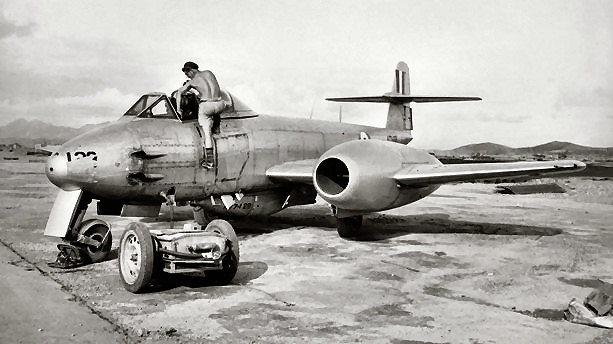
On the 16 Mar 1953, a dawn patrol by two Meteor aircraft of No 77 Squadron triggered one of the largest and most spectacular actions involving Australian airmen in the Korean War.
A long line of about 140 vehicles was discovered moving slowly, almost bumper-to-bumper, on a road through hills leading onto the plains south of Wonsan, on the east coast. The patrol leader and his wingman attacked the trucks at the front and rear of the convoy, causing them to explode and block the road, before radioing another section of Meteors operating nearby to provide assistance.
As the target was so large, more Meteors were summoned from Kimpo (Seoul). American aircraft also joined in the attack and by midday an estimated 90 trucks had been destroyed. The vehicles’ occupants mounted a heavy volume of fire against the attacking aircraft, damaging several of the Meteors but without bringing any down.
RAAF Caribou unit mortared at Vung Tau.
On the night of 12th March, 1966, about 60 mortar rounds were fired on the US airfield at Vung Tau, South Vietnam, from the direction of mud islands situated in the river estuary to the north-east. Two rounds impacted in the standing area used by the RAAF Transport Flight Vietnam (RTFV), while another two landed close by.
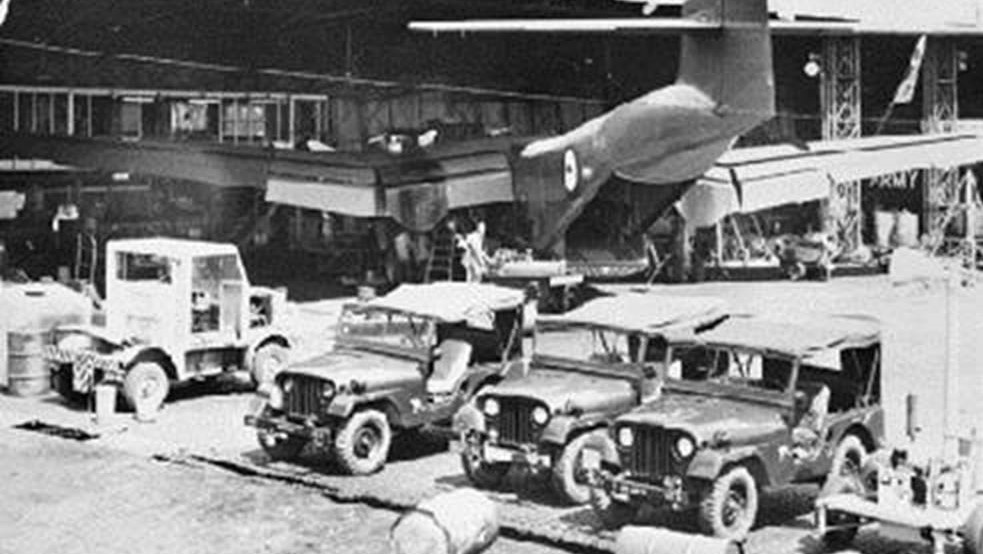
The Flight’s hangar had a hole torn in its roof from one explosion and two of the unit’s Caribous inside the building were peppered by shrapnel fragments, one being holed in 18 places, the other in three.
Despite having a third of its aircraft temporarily out of commission, the Flight carried on with its operational schedule without disruption. After the airstrip and hangars were cleared of debris in the early hours following the attack, a RAAF Caribou took off at first light.
See HERE for more information.
The Pic below was taken just after cyclone Tracy had ripped through the city in 1974, leaving a huge clean up job for all those who remained in the area and not evacuated south.
Run your mouse over the pic to see what it looks like today.
During the early hours of Christmas Day 1974, Cyclone Tracy devastated
Darwin with winds in excess of 160 knots, killing 49 people ashore and a
further 16 at sea. During the following month, the Royal Australian Navy
(RAN) would embark upon its largest peacetime disaster relief operation,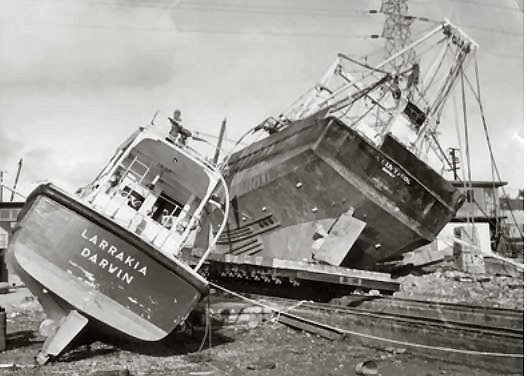 involving 13 ships, 11 aircraft and some 3,000 personnel. Tracy left
more than 25,000 out of the 48,000 inhabitants of the city homeless.
With essential services severed, the possibility of the spread of
disease, and shortages of food and shelter, it was quickly decided that
a sizeable part of the population would have to be evacuated and a
priority system was established based on the principle 'women and
children first'. This resulted in the evacuation of over 30,000 people
of whom many never returned. While approximately 10,000 people left by
road, others were evacuated by aircraft. The airlift began on Boxing
Day, and over the next six days more than 25,000 people were evacuated,
an amazing feat.
involving 13 ships, 11 aircraft and some 3,000 personnel. Tracy left
more than 25,000 out of the 48,000 inhabitants of the city homeless.
With essential services severed, the possibility of the spread of
disease, and shortages of food and shelter, it was quickly decided that
a sizeable part of the population would have to be evacuated and a
priority system was established based on the principle 'women and
children first'. This resulted in the evacuation of over 30,000 people
of whom many never returned. While approximately 10,000 people left by
road, others were evacuated by aircraft. The airlift began on Boxing
Day, and over the next six days more than 25,000 people were evacuated,
an amazing feat.
The 351 naval personnel then based in Darwin possessed only a limited capability to render immediate assistance to the stricken city and its community. Of the four Darwin based Attack Class patrol boats, HMAS Arrow had sunk under Stokes Hill Wharf with the loss of two lives, HMAS Attack was driven ashore at Doctor’s Gully by the sheer force of the cyclonic winds and HMAS Advance and HMAS Assail were damaged. Darwin Naval Headquarters was destroyed, as was 80 per cent of the patrol boat base and 90 per cent of the naval married quarters. The oil fuel installation and the naval communications station HMAS Coonawarra were extensively damaged. Initial relief was limited to search and rescue operations on the harbour foreshore and in waters out to Melville Island. Communications facilities in Darwin, both military and civil, were crippled, and initial communications were dependent upon Army mobile terminals and the communications systems in Advance, Assail and the motor vessel Nyanda.
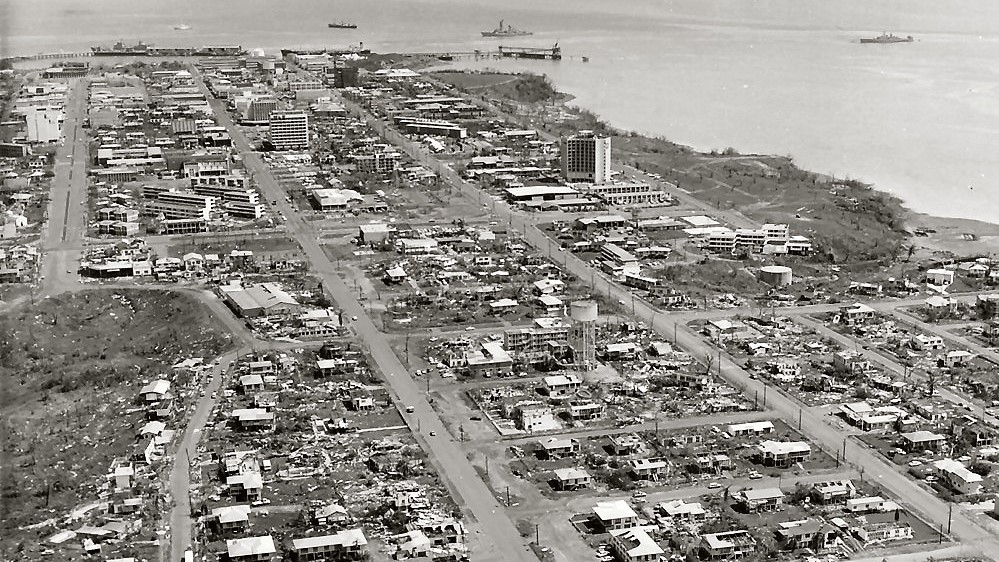
As the gravity of the disaster became apparent, a naval task force, under the command of the Flag Officer Commanding the Australian Fleet (FOCAF), Rear Admiral DC Wells, CBE, RAN, was assembled to render aid to Darwin. A general recall was issued to all personnel. Approximately 50 per cent of all Sydney based ships’ companies were on annual leave, with many interstate. Of the 2,700 personnel on leave, 2200 were able to return to their ships prior to sailing and others subsequently managed to join their ships in Townsville. Volunteers from other Sydney-based ships and establishments filled the positions of those who could not return to their ships in time. All manner of stores were embarked on the deploying ships, ranging from combat bridges, vehicles and building materials down to disposable cutlery.
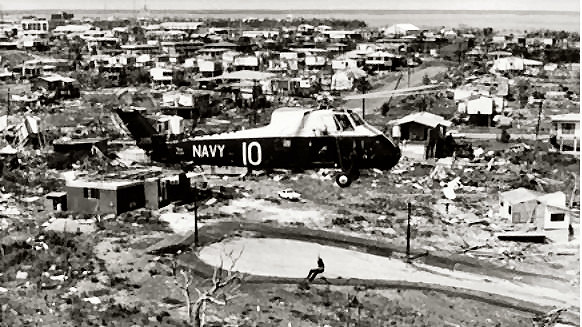
The response of Operation NAVY HELP DARWIN was swift. The first RAN asset to arrive in the disaster stricken city, on 26 December, was a HS748 aircraft from 851 Squadron, carrying blood transfusion equipment and a team of Red Cross workers. A second HS748 aircraft carrying members of Clearance Diving Team One (CDT1) arrived shortly thereafter. On 26 December HMAS Balikpapan and HMAS Betano sailed from Brisbane, HMAS Flinders sailed from Cairns, as did HMAS Melbourne, with the Flag Officer (FOCAF), HMAS Brisbane and HMAS Stuart sailed from Sydney. Four S2E Tracker aircraft from 816 and 851 Squadrons prepared to fly to Darwin, but were placed on standby and eventually stood down. The following day, HMAS Hobart, HMAS Stalwart, HMAS Supply and HMAS Vendetta sailed from Sydney and HMAS Brunei and HMAS Tarakan sailed from Brisbane. Nine Wessex helicopters from 817 and 725 Squadrons were embarked in Melbourne and Stalwart. HMAS Wewak subsequently sailed from Brisbane on 2 January 1975. The submarine HMS Odin had been nominated to proceed to Darwin to act as a power station, before the authorities determined that appropriate power conversion facilities did not exist in Darwin.
The Director General of the National Disasters Organisation, Major General AB Stretton, DSO, arrived in Darwin on 26 December with his staff officers to establish an Emergency Services Organisation Committee. Captain EE Johnston, OBE, RAN, Naval Officer Commanding the North Australia Area (NOCNA), was appointed to the committee as Port Controller, with responsibility for controlling the port and its approaches, and for drafting an Emergency Plan in the event of a further cyclone.
As preparations were made for the arrival of the naval task group, Captain Johnston relocated the naval headquarters to his residence, Admiralty House. Following an exchange of signal traffic it was agreed that the RAN relief force would be allocated responsibility for clearing and restoring 4740 houses in the northern suburbs of Nightcliff, Rapid Creek and Casuarina. HS748 aircraft continued to ferry personnel and stores to Darwin and evacuees south. Evacuees were accommodated in HMAS Kuttabul, HMAS Penguin and HMAS Watson in Sydney; and HMAS Moreton in Brisbane. CDT1 was surveying damage to the patrol boats and civilian craft, searching for missing vessels, clearing Stokes and Fort Hill Wharves, and assessing how to extract the wreck of Arrow.
The first ships, Flinders and Brisbane, arrived in Darwin on 31 December. Flinders surveyed the approaches to Darwin to ensure the safe passage and anchorage of the Task Group, while Brisbane landed working parties and established communications. Melbourne and Stuart arrived on 1 January; Stalwart on 2 January; Hobart, Supply and Vendetta on 3 January; and Balikpapan and Betano on 4 January. Brunei, Tarakan and Wewak arrived the following week on 13 January. The ships had brought with them some 3000 naval personnel.
The arrival of Melbourne precipitated the establishment of a Shore Command Headquarters at Admiralty House to coordinate the working parties, which were tasked by the Emergency Services Organisation. Working parties were typically composed of 10 or 15 officers and sailors, depending upon the nature of the task.
With the arrival of the Task Group, the primary focus for CDT1 turned to the extraction of Arrow from Stokes Hill Wharf, a task achieved on 13 January after much work. Unfortunately Arrow was damaged beyond repair and was subsequently decommissioned and scrapped.
The raw statistics amply illustrate the magnitude of the relief work undertaken by the RAN. Between 1 and 30 January naval personnel spent 17,979 man days ashore, with up to 1,200 ashore at the peak of the operation. Working parties cleared some 1593 blocks and cleaned up schools, government and commercial buildings and recreational facilities. They installed generators, rewired houses, repaired electrical and air conditioning systems, reroofed or weatherproofed buildings, and maintained and repaired vehicles. Some parties worked to save rare plants in the Botanic Gardens. Hygiene parties disposed of spoiled foodstuffs from houses, supermarkets and warehouses. Female personnel from Coonawarra supported civil relief organisations and manned communication centres. One enterprising sailor from Hobart filled in as a relief disc jockey for the local commercial radio station. The Wessex helicopters transported 7832 passengers, 110,912kg of freight and made 2,505 landings. The HS748 aircraft completed 14 return flights to Darwin and carried 485 passengers and 22,680kg of freight.
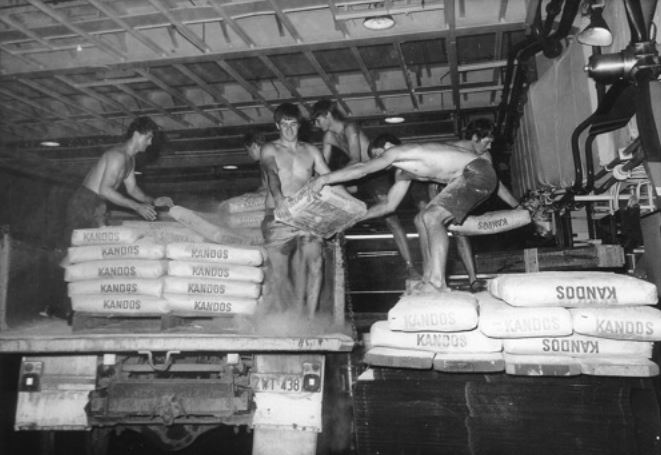
Like its arrival, the departure of the Task Group was staggered. Balikpapan and Flinders departed early, on 7 and 9 January respectively; Stuart, towing Attack to Cairns, sailed in company with Brunei, Tarakan and Wewak on 17 January; Hobart, Melbourne left on 18 January; Betano on 23 January; and Supply and Vendetta on 24 January. The Navy HQ was closed down on 30 January and responsibility for the continuation of disaster relief was transferred to the Commandant of the Army’s 7th Military District. The following day the last ships, Brisbane and Stalwart, sailed from Darwin.
The departure of the Task Group did not, however, signify the end of the RAN’s support to the rehabilitation of Darwin. In May and June 1975 the minehunters HMA Ships Curlew, Ibis and Snipe surveyed the approaches to Darwin and the harbour itself, locating trawlers sunk during Cyclone Tracy, and other navigational hazards.
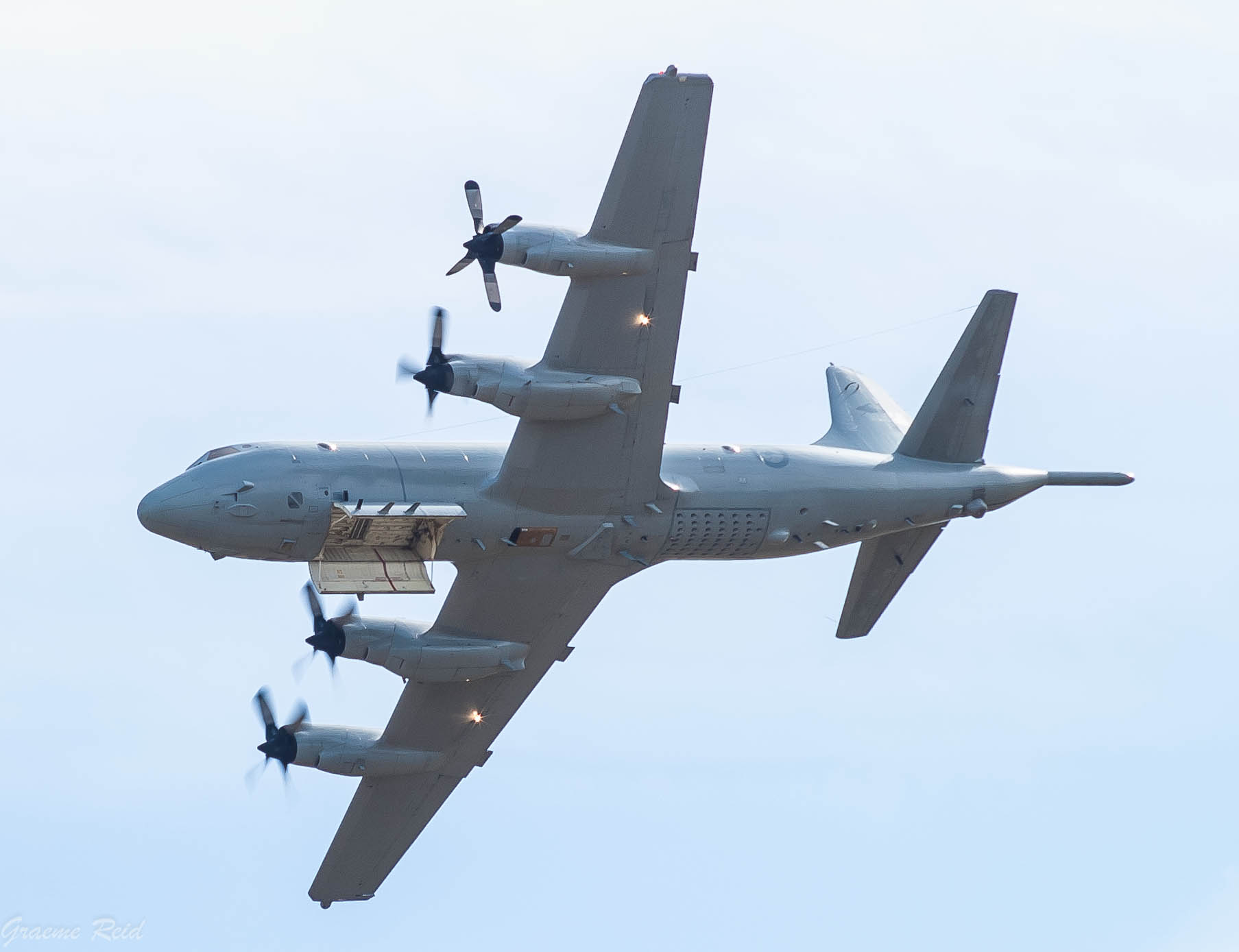
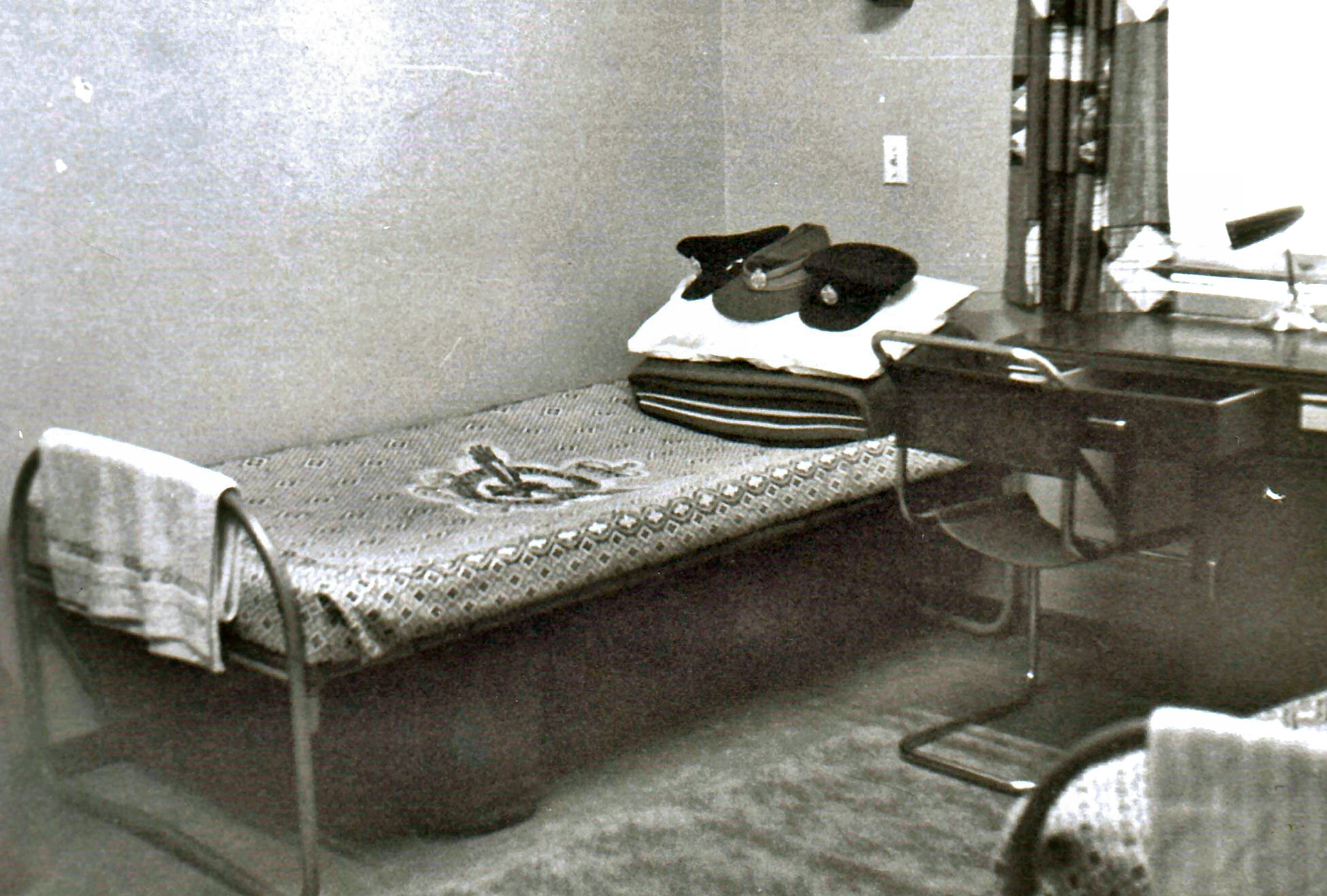
36 Sqn C-130A at Laverton, 1975.
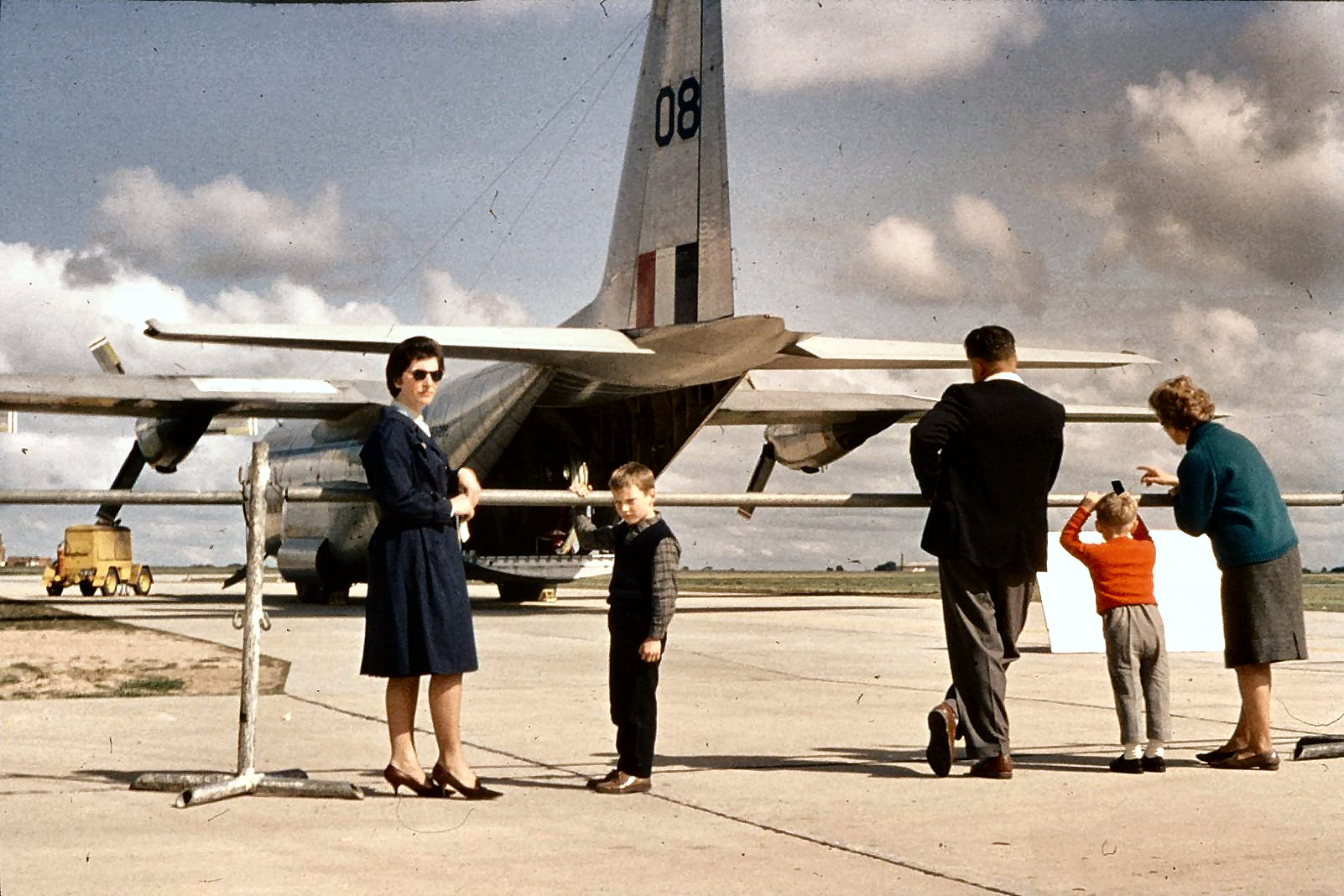
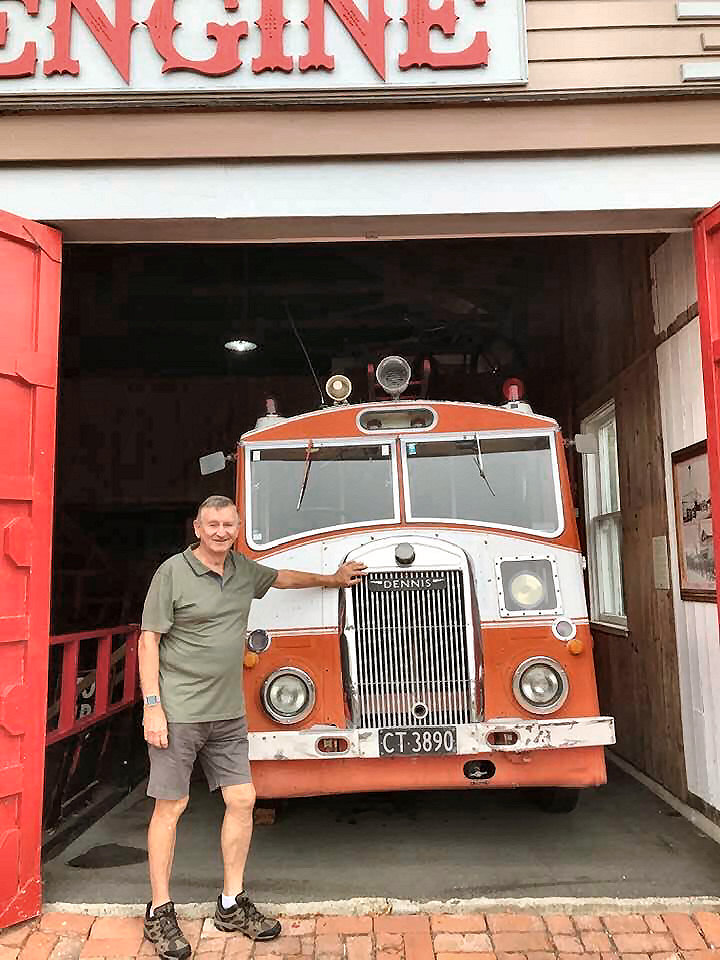
Dennis Craig with an elderly fire
truck, which he insists was named
after him.
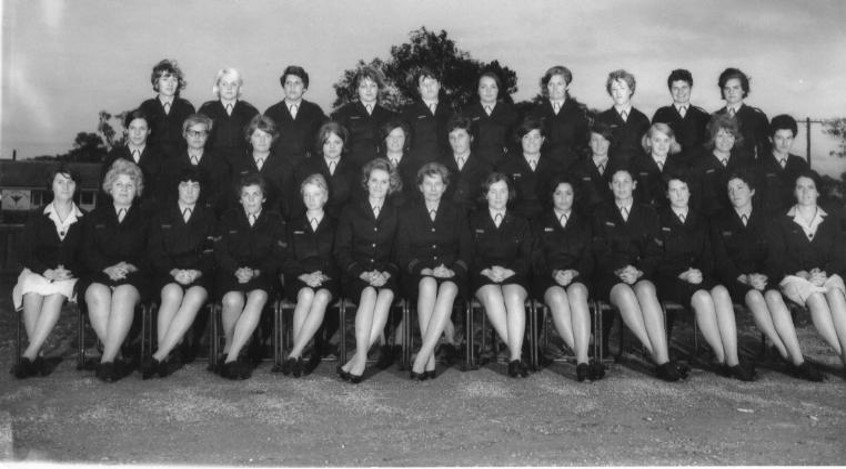
Back Row L-R: Pam Cansick, Frankie Sloan, Don’t know, Sally Cook, Helena S, Don’t know, Madonna Busby, Joan Rix, Charmaine ?, Kay Collins
Middle Row L-R: Chris Price, Jutta Gaiduks, Don’t know, Di Hart, Don’t know, Don’t know, Gladys Zeagers, Don’t know, Carol Ross, Lyn Mitchell
Front Row. L-R: Don’t know, Carol Ziscie, Helen Irwin, Dawn Dennis, Don’t know, Don’t know, Don’t know, Diane Blatnick, Maureen McIntyre, Bev Styles, Don’t know, Don’t know. Janice Bruntin.
At "Tex's" 21st (Love the hair?)
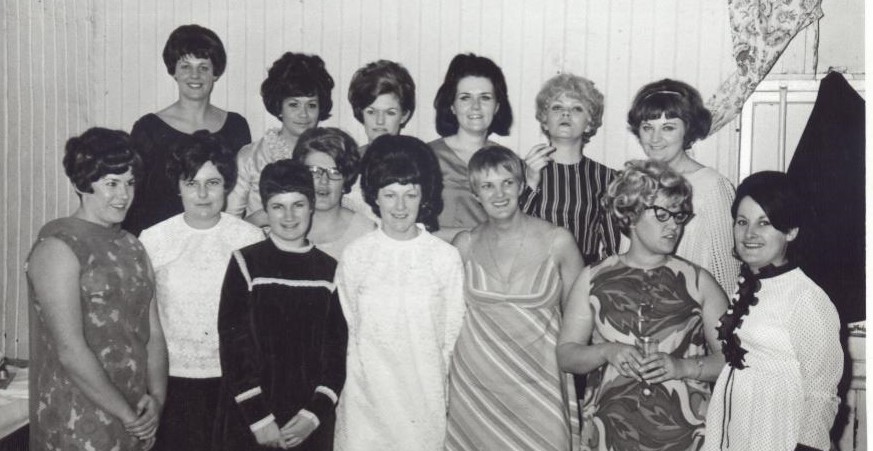
Back Row L-R: Bev, Maureen, Joan, Janice
“Woody” Brunton, Carol, Lyn.Front Row :-R: Helen, Yvonne, Katie, Heather, Tex, Birdie, Jutta, Kathy.
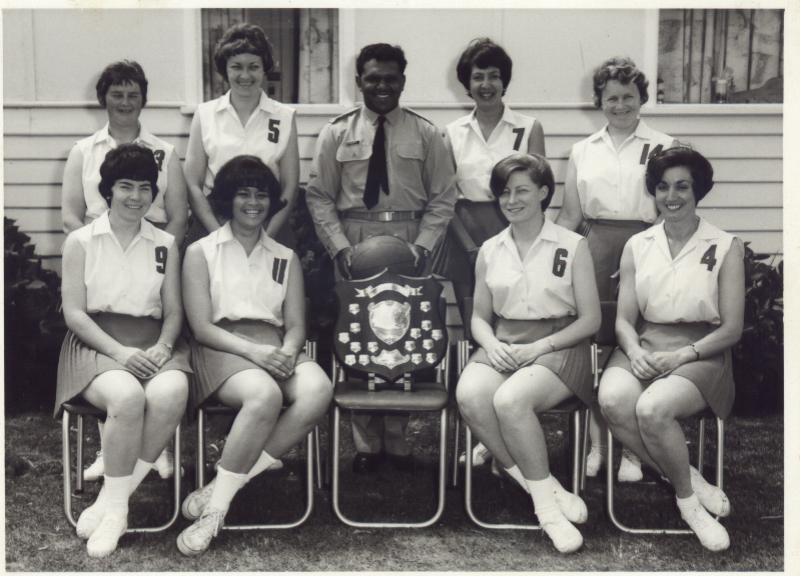
Back Row: L- R: Marcia Alcock, Daphne Smith, Harry Allie, Helen Heinritz, Lyn Laurie.
Front Row L-R: Helen Irwin, Maureen McIntyre, Rosemary Meredith, Marj Jones.
CSAE (Communications Systems Advanced Electronics) Course, held at Laverton, 1981.
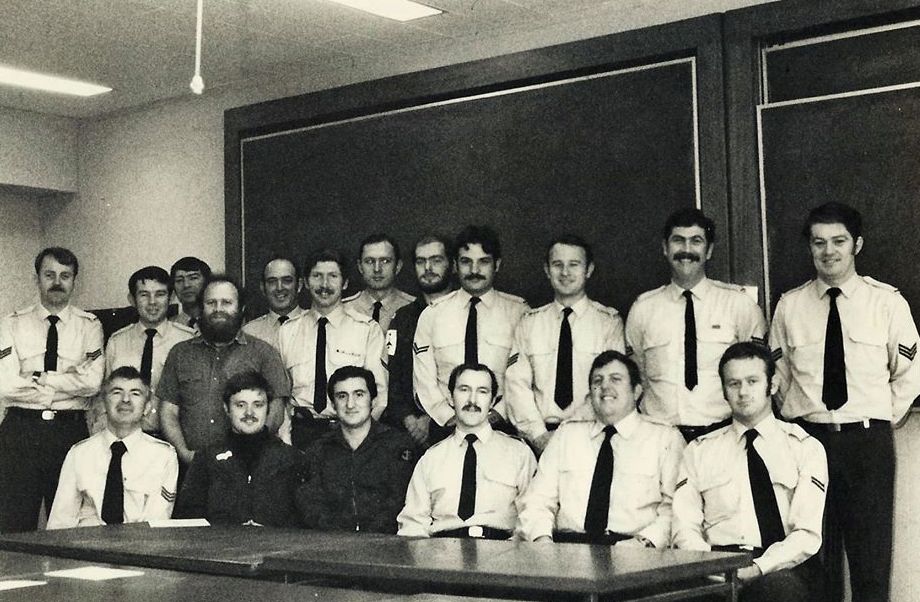
Air Movements Williamtown, April. 1981.
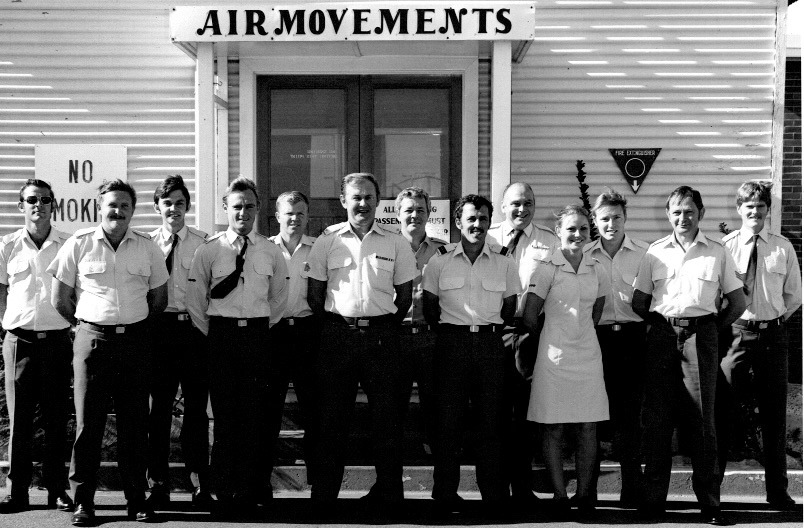
L-R: Mal Stanborough, Dick Farrell, Wayne Silverman, Steve Bailey, Allan Bickle, Peter Puck, Frank McDowell, Trevor Blessing, Bill Ellis, Donner Baumer, Nigel Smit, Dennis Coulter, Steve Edgar.
WRAAF Course 110, Point Cook 1961
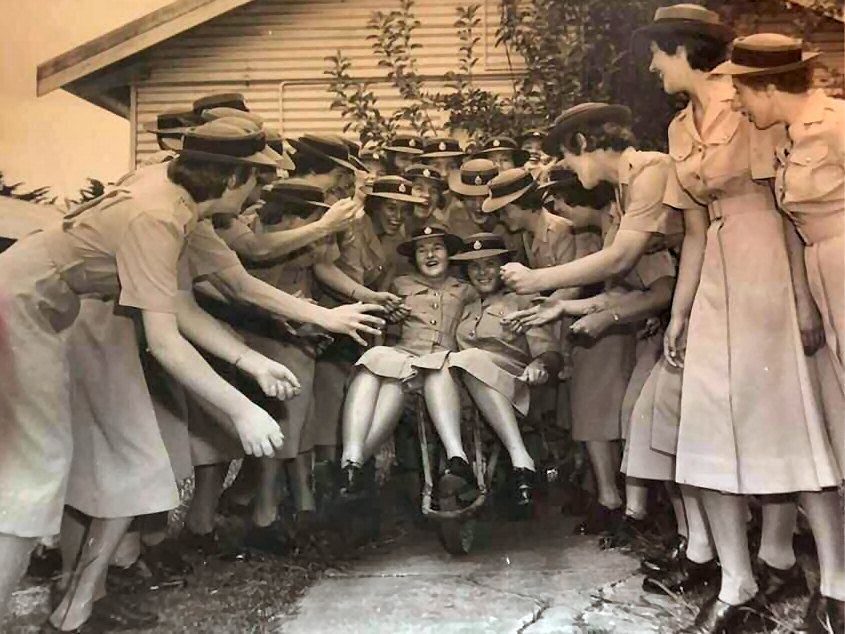
Doreen Brown and Audrey McDonald, Point Cook, 1961
Back in Vol 67, we had a pic of a bunch of pretty girls “admiring” an F-111. The Mirage boys got in touch, they reckoned their aircraft was more popular with the ladies than was the F-111 and they sent us the pic below to prove it – and who are we to argue with them.
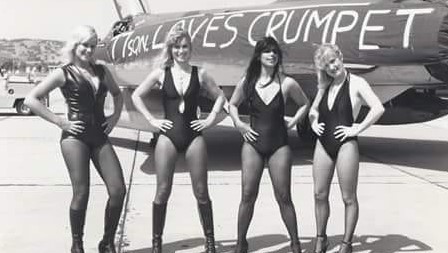
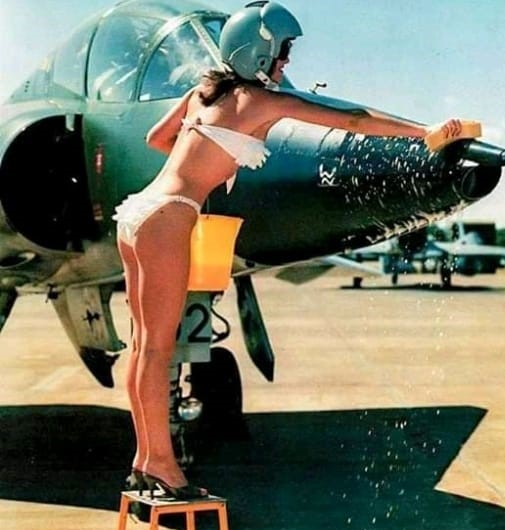
But then someone else says the
way to make an aircraft go faster
is to clean it and they reckon they
have the photographic evidence
to prove it.
We won’t argue with that either.
Back Go to page: 1 2 3 4 5 6 7 8 9 10 11 12 13 14 15 16 17 18 19 20 Forward